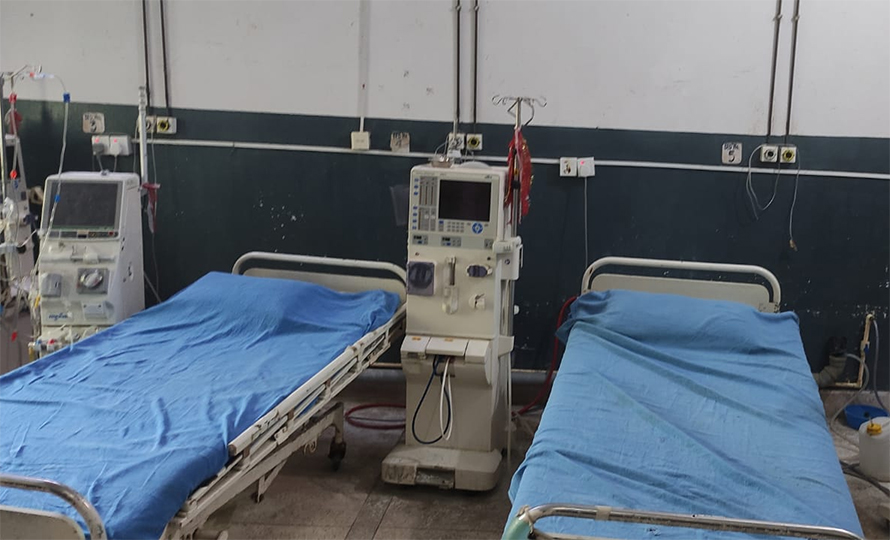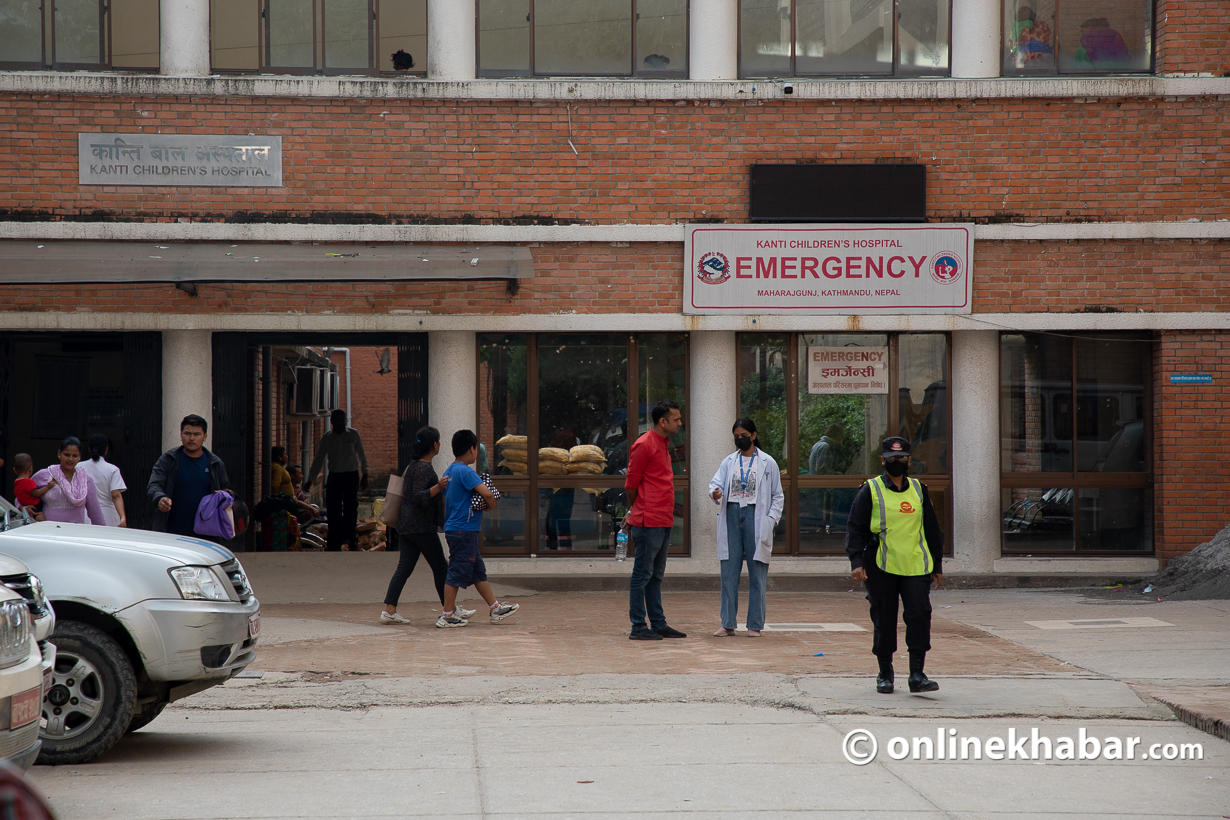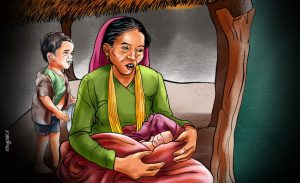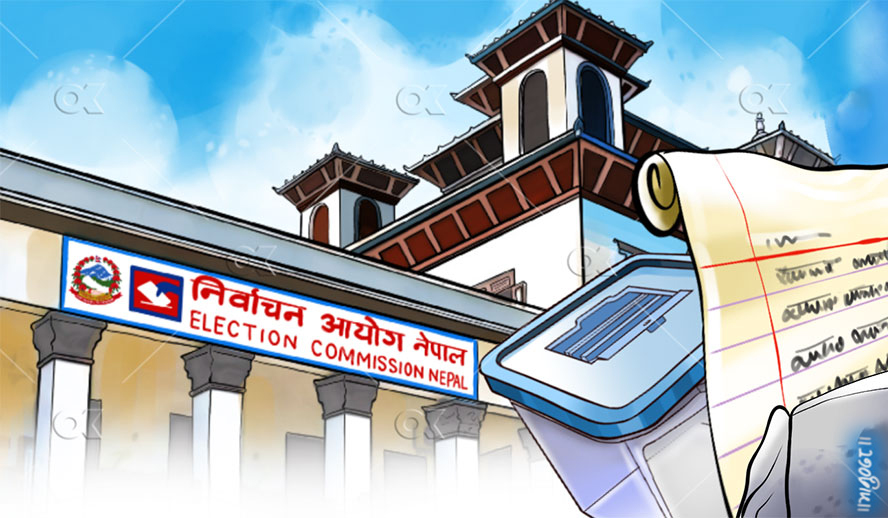
Seti Tharu, 40, of Kohalpur in the Banke district of southwestern Nepal, had kidney problems for three years. Her relatives took her to hospitals in Kathmandu and Lucknow, India, for treatment. By the time she was transferred from one hospital to another, she would have required a dialysis service.
Tharu had been receiving a free dialysis service at Nepalgunj Medical College Teaching Hospital in Kohalpur for the past year and a half after being unable to stay in Kathmandu.

But, she died in the last week of October this year. According to the family members, the patient died due to a lack of timely dialysis services.
Jiris Man Chaudhary of Bardiya was diagnosed with a kidney problem in 2018. After having to undergo regular dialysis, he started living in Kohalpur with his wife and children three years ago. Chaudhary died on November 9 after the free dialysis service stopped.
“Dialysis was not done for seven days because the machine broke down. One has to pay more than Rs 7,000 for dialysis in a private hospital,” Rooprani Chaudhary tells Onlinekhabar, “My husband died due to a lack of money for dialysis.”
Since July, 33 patients have died undergoing dialysis at Nepalgunj Medical College Teaching Hospital, Kohalpur. Many other patients like Chaudhary and Tharu died prematurely when the dialysis service was stopped in the hospital.
Dialysis-death link
According to the hospital, there were 57 patients undergoing regular dialysis. However, since July, the free dialysis service was disrupted and the number of patients undergoing regular dialysis has reduced to 18 now.
It adds that 10 patients each in July and August, seven in October and six people in November have died due to the lack of regular dialysis service. When the service was in proper condition, only seven people died within the month of April, May and June.
According to Dr Anil Baral, a nephrologist working at Bir Hospital, a patient who is undergoing dialysis may die if the treatment is interrupted for a week or two. If the patient does not receive dialysis services on time, the amount of potassium in the blood increases, making the heart stop its function. Moreover, when the kidneys stop working, there is no urine. Baral says, “Due to this, the water that the patient drinks accumulate in the body. When water accumulates in the lungs, there is no oxygen flow and the patient dies.”
The cost of a payment delay
Nepalgunj Medical College Teaching Hospital, in agreement with Birang Healthcare Pvt Ltd, had been providing free dialysis service since 2020. However, the company has stopped providing regular services as it has not received the agreed amount from the hospital. Shishir Shah, the manager of Birang Healthcare, claims that the dialysis service has been stopped as the hospital has stopped the payment since last year.
“From the last fiscal year till now, the hospital has the due payment of about Rs 20 million,” Shah tells Onlinekhabar, “We need the payment to repair all the machines we have. And, we have run out of places to ask for loans too.”
The hospital administration says that the company could not be paid because the government did not provide the funds. It says the government has not provided funds for dialysis since mid-July 2021.
According to the Department of Health Services, as the hospital has not renewed itself in the fiscal year 2021/22, the fund has not been released.
Indifferent authorities
Until April 2022, the Nursing and Social Security Division was handling the trust for medical care for poor citizens (Bipanna Nagarik Ausadhi Upachar Kosh). After April 2022, it has been merged into the health insurance programme. The trust would provide free medical treatment directly from the designated hospitals to poor patients with eight critical ailments, amounting to up to Rs 100,000 each.
Similarly, there is a provision to provide medication facilities worth Rs 400,000 through the listed hospitals for a kidney transplant. The government is allocating a budget of more than Rs 2 billion annually for this alone. But, the problems of patients are the same.
Shambhu Prasad Gyawali, the information officer of the Health Insurance Board, says “Hospitals should be renewed every year to provide such services. The (Nepalgunj) hospital has not been renewed in the fiscal year 2021/22.”
“It has only been a few days since the hospital submitted its renewal documents. We will send the fund within a few days.”
As the machine will not be repaired and the dialysis service will not be able to run completely until the fund is sent, it seems that even “within a few days”, the lives of more patients will be at risk.
Sanjay Kumar Pant, the information officer of Nepalgunj Medical College Teaching Hospital, says Birang Healthcare should be held responsible for the discontinuation of dialysis services.
The hospital’s director Dr Resham Bahadur Rana is also not ready to take responsibility.
Big numbers again

According to expert doctors, dialysis is done when a kidney functions up to just around 15 per cent of its capacity. If the kidneys stop working completely, the patients should be taken to the hospital for dialysis two to three times a week.
According to government statistics, 658 patients have not been able to get their turn due to the lack of repair of dialysis machines in various hospitals and the lack of machines in some places.
According to the data of the Nursing and Social Security Division of the Ministry of Health, more than 6,000 patients across the country have been registered for the service, out of which, only 4,547 patients have received it regularly. Apart from those listed, there are 658 patients waiting for free dialysis.
The government does not even have data on patients undergoing dialysis in private hospitals.
Dialysis facilities have been expanded to only a few accessible places outside the capital. According to the latest data, the service is available in 73 public and private institutions across the country. They are located in Kaski, Rupandehi, Parsa, Chitwan, Banke, Morang, Pokhara, Jhapa, Dhanusha, Ramechhap, Tanahun, Dang, Kailali, Kavre, Surkhet, Baglung, Saptari, Myagdi, Syangja, Parbat, Siraha, Makwanpur, Kathmandu, Lalitpur and Bhaktapur districts.
This service is available in 25 places in the Kathmandu valley. Out of 693 machines across the country, 288 are in the capital. In this way, 41 per cent of the free dialysis service provided by the government is in Kathmandu and the rest is in the outer districts. This service has not yet reached any health institution in 50 districts.
Challenges galore
Dr Rishi Kumar Kafle, a senior nephrologist, says that only adding new machines and neglecting the maintenance of available machines do not solve the problem in the treatment of patients. According to him, the government’s failure to pay for the dialysis service on time is the main reason why the service is not running properly.
Divisional Nursing Officer Karuna Timalsina admits that the dialysis machines could not be repaired on time due to a lack of trained human resources. There is a problem due to a lack of dialysis machines or failure to repair them on time. She says, “We have not been able to monitor as much as we should. We are listing more hospitals to prevent that from happening.”
Dr Baral, who works at Bir Hospital, says that if the dialysis service is extended to the community instead of the hospitals, it will be easier for the patients. It is appropriate to give dialysis in the hospital only to patients who have sudden kidney failure and need to be treated. In the case of other regular patients, it seems appropriate to focus on the community.
Dr Baral says, “Developed countries have a community-centric dialysis service. If such a service is started in Nepal too, it would be much easier for the patients.”
This story was translated from the original Nepali version and edited for clarity and length.























